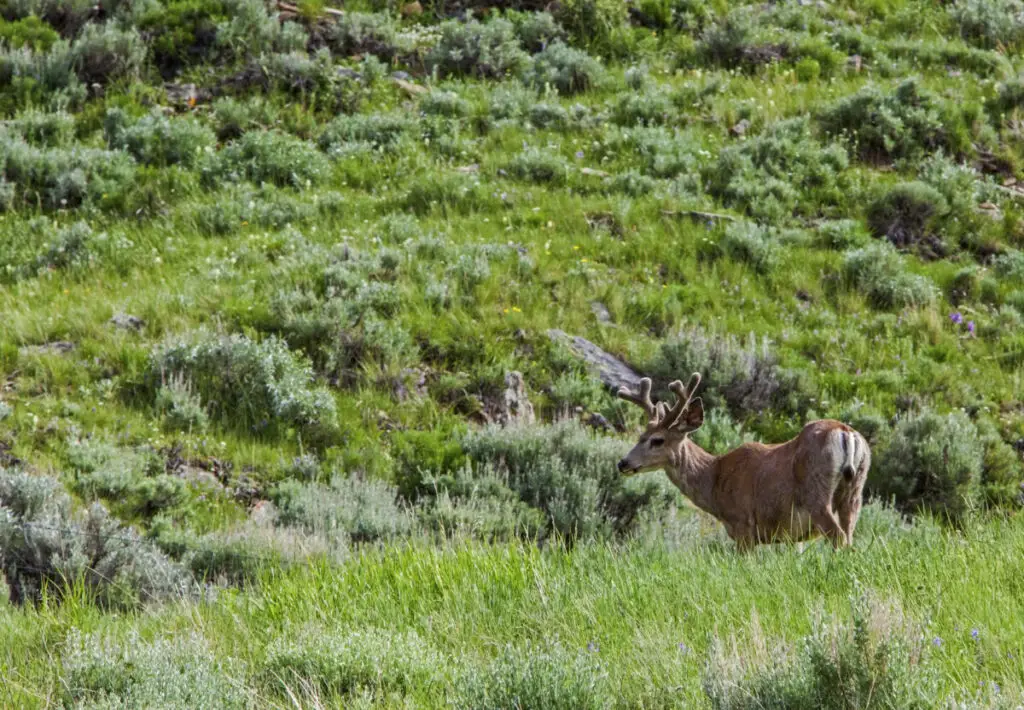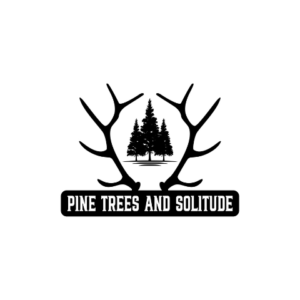
Spot and stalk is a great tactic to use when hunting mule deer. While it has traditionally been associated with bow hunting, rifle hunters are now increasingly using the tactic as well. With the right tactics, you can use this technique to bag a mule deer.
By glassing from a vantage point, keeping the wind in your favor, the sun at your back, and staying silent with soft clothing, you can get extremely close to mule deer using the spot and stalk method. There is more than one way to achieve silent movement and we will talk more about these tips to help you have a successful stalk.
Observation “Spot”
Identifying observation points
The observation part or “spot” can start with identifying vantage points in your hunting area from an app like OnX or a traditional map long before you even get into the field. You will need to determine where you plan on observing the area, ideally from a position of high ground that overlooks the area.
Time of day
What time of day are you going to be glassing in? This is important to anticipate as you are deciding your observation points. Mule deer are most active at dawn and dusk.
This means that you want to plan on having the sun on your back so the sun doesn’t blind your optics or highlight your position. You want to be in the shadows watching what is going on in the light.
If you are glassing in the middle of the day, that means you should be on the lookout for bedded deer. Break up the mountain into sections and scour the area for deer body parts.
This is the hardest type of glassing as you are looking for an ear or a face. But, when a bedded deer is spotted, it is also a great time to begin your stalk.
Stalking
Time to move
Whether you have spotted a deer that is feeding and moving slowly in a certain direction or a deer that is bedded, you need to anticipate where the deer will be as you begin your stalk.
You undoubtedly lose sight of the deer at some point so it is important to identify landmarks as reference points such as what is close to the deer (so you can find it again in a hurry), and the next spot you are moving to for another look.
With waypoints identified you will want to move as stealthily as possible toward your next observation point. One way to do that is to use a ridgeline as cover.
You do not want to move towards your deer or your next observation point in direct line of sight of the deer. You will cast a silhouette and the deer will see you if you walk on top of the ridgeline.
Instead, travel along the ridgeline toward your next waypoint using the mountain as a shield to cover your movement.
When you need to take a look at where you are again, just slowly peek over the ridge and make note of your movement progress.
Be quiet
As you start to get closer to the deer, you will probably be making noise by rubbing again brush or stepping on twigs. While you want to avoid that as much as possible it is not always possible.
Instead, start moving like a mule deer. Start taking slow batches of steps and then pause to listen. Any noise you make will have a better chance of being dismissed by the deer as something in nature.
Deer make noise too. What they don’t do is move in a straight light for prolonged periods of time, which is what you are doing as you B-line it towards the deer or next waypoint.
Wind
You always want to be downwind of the animal you are stalking. So if you are a visual learner just remember that it is ok to smell the deer, it is not ok for them to smell you.
From the first moment, you leave your glassing position to start your stalk keep the wind in your favor. When it comes to the wind there are a couple of tools to keep in mind to help master your battle with the wind.
One would be scent-eliminating products. There are quite a few products out there you can research that will help eliminate clothing and body odors. This is primarily for bowhunters to keep in mind as they will need to be much closer.
Another tool that is extremely handy is a wind detector. The product I am thinking of is a handheld plastic bottle that you can squeeze and it shoots out a light powder so you can see where the wind is blowing. On mild days it is easy to confuse the wind direction.
Clothing
Now we come to clothing. When it comes to stalking there are certain types of clothing that will greatly increase your stalking success.
Soft fabrics: Head over to your local sporting goods store and look for some hunting clothes that have soft fabrics. There are many hunting brands that make suitable hunting pants and coats that will not make any noise when brushed up against brush and tree branches.
Camouflage: Is it necessary? For bowhunting mule deer it most certainly is. You will be very close and every advantage is needed in this type of hunting.
For rifle hunters, camouflage is an advantage as well. While mule deer see in black and white the camouflage helps break up your outline. There are plenty of people who harvest muleys without camo every year but it is better to have it than not when spotting and stalking.
Final Tip: Wool Socks. Yep, especially for bowhunting. If you want to invest in some wool socks and somehow wrap them around your boots, or even remove your boots when you get really close and put on 2 pairs of thick wool socks. You can be like a ghost on your final stalking approach.
It may seem extreme, but you can take it or leave it.
Combining all of these things will give you a great base to start your spotting and stalking experience. I commend you on this hunting strategy as it takes extra effort to get out and stretch your legs in steep mule deer country.
If you enjoyed this article, here are some more helpful articles from Pinetrees And Solitude.
- What You Need For An Idaho Mule Deer Hunt
- Catch Mule Deer While They Are Active
- What Should I Bring Elk Hunting? Idaho List
- Hunting Elk In Timber: Tactics To Even The Odds
(This article was originally published on Pintreesandsolitude.com. If it is now published on any other site, it was done without permission from the copyright owner.)
